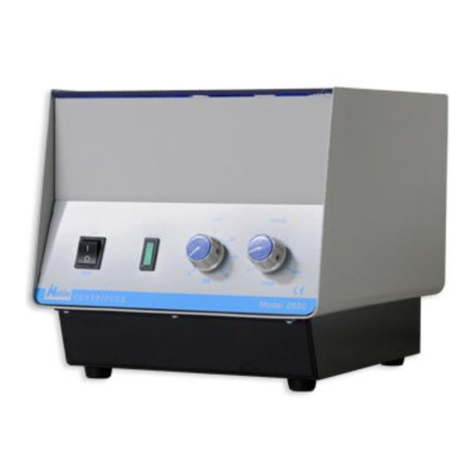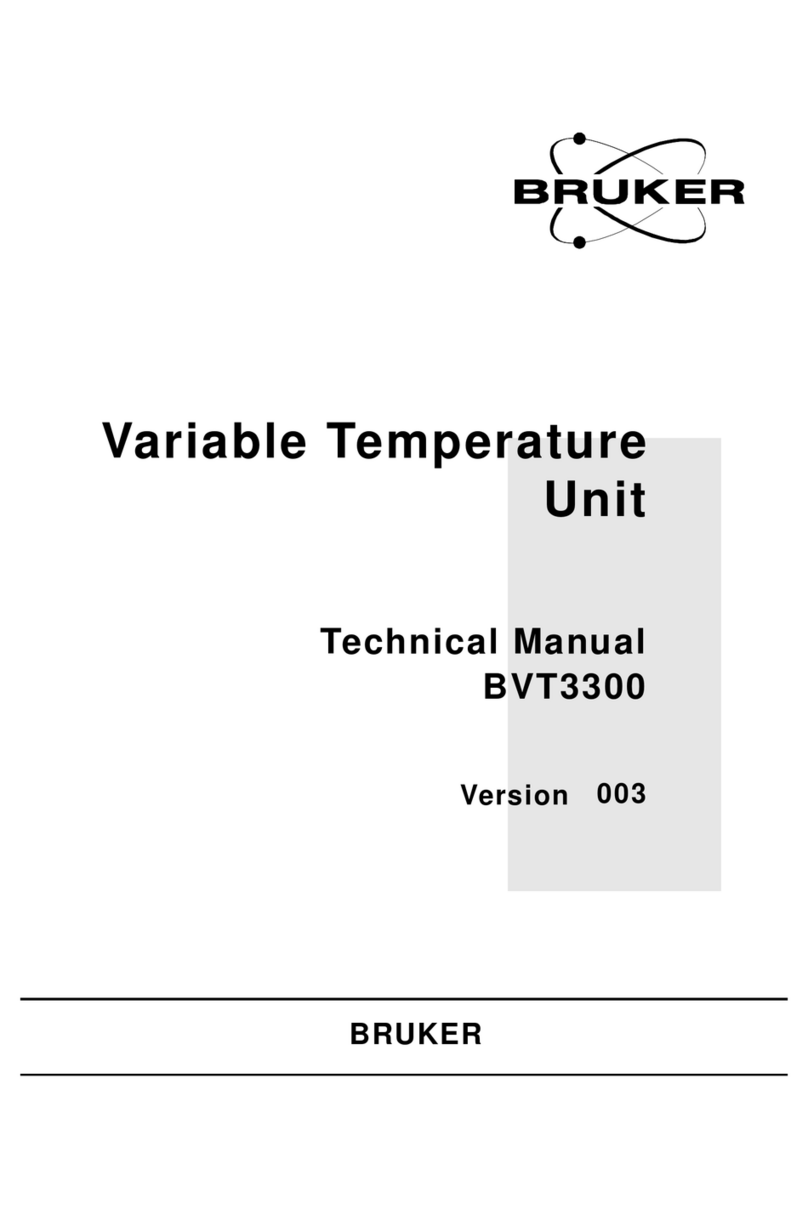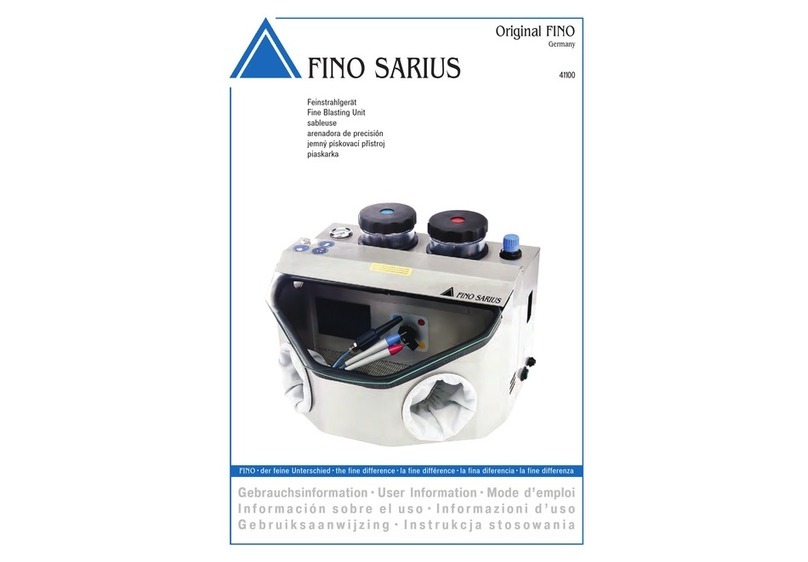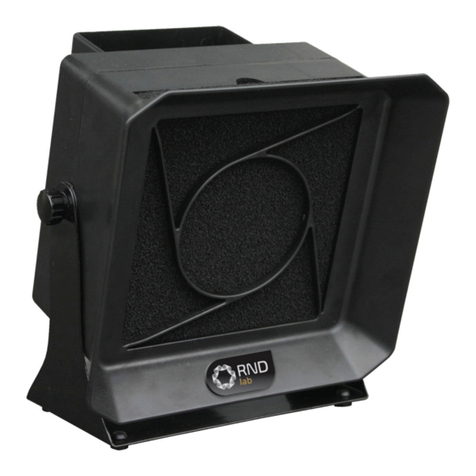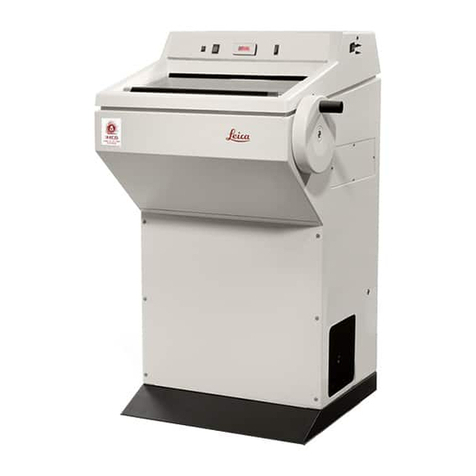Cirs Beam Profile & Slice Thickness Phantom ATS... User manual

USER GUIDE
U
L
T
R
A
S
O
U
N
D
Q
U
A
L
I
T
Y
A
S
S
U
R
A
N
C
E
Beam Profile & Slice
Thickness Phantom
Model ATS 538NH
900 Asbury Ave • Norfolk, Virginia 23513 • USA • Tel: 757-855-2765 • WWW.CIRSINC.COM

2

TABLE OF CONTENTS
1 OVERVIEW
1
2 INSTRUCTIONS FOR USE
1
HANDLING AND CARE
��������������������������������������������������������������� 1
GENERAL GUIDELINES FOR PERFORMING MEASUREMENTS
������������������������� 2
ESTABLISHING A BASELINE
��������������������������������������������������������� 3
3 TESTING PROCEDURES
4
BEAM PROFILE/FOCAL ZONE/LATERAL RESPONSE WIDTH
��������������������������� 4
ELEVATIONAL RESOLUTION
���������������������������������������������������������� 6
4 SPECIFICATIONS
10
5 WARRANTY
11

1
OVERVIEW
The Model 538NH can measure
the beam prole and slice thickness
of ultrasound imaging systems by
evaluating the appearance of a thin
plane of echogenic material against
an anechoic background.
Scanning the scattering plane from
one surface, perpendicular to the
thin plane, obtains an image of the
beam prole at varying depths of the
538NH. This image contains a great
deal of information about the sound
beam as it propagates through the
tissue-mimicking media such as the focal length, focal zone, beam width, side and
grating lobes, and far-eld beam divergence. In addition, the near eld region of the
beam can be easily distinguished from the far eld as varying degrees of brightness
close to the scan surface versus the homogeneous amplitude further down.
Scanning the scattering plane from a second surface, 45 degrees from the scat-
tering plane, allows users to evaluate the slice thickness of an imaging system at
varying depths. Slice thickness or elevational resolution, the third component of
spatial resolution, displays reections produced by structures in front of or behind
the beam’s main axis. The effect of changes in the slice thickness is identical to
those seen with axial and lateral resolution. The thinner the slice thickness, the
better the resolution: as the slice thickness increases, the degree of spatial resolu-
tion decreases. All ATS urethane phantoms are guaranteed for the useful life of the
phantom, dened as 10 years.
Key Tests with Model
ATS 538NH
• Tissue Harmonic Imaging
Compatibility
• Beam Prole/ Focal Zone/
Lateral Response Width
For more information on these tests, see
"Testing Procedures" starting on page 4
INSTRUCTIONS FOR USE
HANDLING AND CARE
For best results the phantom should be kept clean at all times. In particular a build-
up of dried coupling gel on the scan surface should be avoided. The phantom may
be cleaned with warm water using a lint free cloth. Particularly stubborn stains and
dirt may be removed with a mild household cleaner. The use of petroleum solvents
should be avoided since they may adversely react with the rubber-based material.

2
GENERAL GUIDELINES FOR PERFORMING MEASUREMENTS
It is recommended that all measurements be performed at the most frequently used
imaging arrangements. The importance of these tests is to make sure that system
performance remains constant over an extended period of time. Measurements
may also be used to compare the performance of various setups of the same
machine or to compare different machines in a quantitative manner.
The following are general steps for imaging all targets:
• If a convex probe is used, center the target within the scan plane in order to
minimize degradation and distortion introduced on the outer edges of the
probe.
• Always be sure the phantom is scanned while at room temperature. A
phantom just received may be colder or hotter than room temperature de-
pending on where it was stored during shipping. Temperature affects the
speed of sound and, ultimately, the perceived measurements. The phantom
should be stored at room temperature for at least 24 hours before use to
ensure its core temperature is correct.
• Most diagnostic imaging systems and tissue-mimicking phantoms are
calibrated at room temperature, commonly referred to as 23°C. To ensure
measurement accuracy, a thermometer strip is afxed to the outside surface
of the phantom housing.
• The sound velocity of most diagnostic imaging systems is calibrated to
1,540 meters per second (mps), the assumed average velocity of sound
through human soft tissue. The rubber-based tissue-mimicking material has
a sound velocity of 1450 at 0.5db/cm/MHz at room temperature (23°C).
The differences in the speed of sound between the assumed calibrated value
of the imaging system of 1540 mps and the rubber-based phantoms as
given above, if gone un-corrected will cause distortion of the measurements
obtained. A simple measurement conversion calculation has been provided,
and should be used when indicated in the test procedure.

3
ESTABLISHING A BASELINE
Before performing routine quality assurance measurements, establish:
1. System settings for each measurement:
System setup can have a dramatic impact on the results obtained from quality as-
surance measurements. You must establish and record what system settings
should be used for each of the quality assurance tests. These same settings
should be used each time the test is performed. If not, then the conclusions
drawn may not be valid. CIRS recommends that you use the most commonly
used settings for the type of probe tested ( i.e. the liver preset values for an abdominal
probe) which are called a "normal" technique in the sections that follow.
2. Baseline measurements:
The rst set of measurements taken will be the baseline measurements for the
combination of system settings and phantom. Record the system settings and
phantom serial number used to acquire each measurement along with
your measurement results. On subsequent scans, refer to the baseline results
to determine if the ultrasound system has drifted to an unacceptable level. It is
each facility's responsibility to establish the magnitude of drift allowed
before corrective action is warranted.
3. Allowable deviation from baseline measurements:
The difference between the original baseline measurements and subsequent
measurement should be calculated and recorded. At some point the difference
will be large enough that some action is required (call service, replace system,
etc.). Each facility needs to determine the action level for each test. You should
refer to the user’s manual of your ultrasound scanner and note the stated
accuracies of the system’s general imaging measurements. These stated ac-
curacies may greatly inuence the conclusion made when evaluating the ultra-
sound system. For example, if the measurement accuracy for your system
is 10% for distances up to 2 cm, the scanner may detect 2.0 cm as being any
where from 1.8 cm to 2.2 cm and still be functioning properly. The user is
responsible for establishing action levels.
4. Frequency of system assessment:
How often each system is evaluated is also up to each facility to determine.
CIRS recommends at least annually.
Reference the accreditation programs established by the ACR and AIUM at
www.acr.org or www.aium.org for further guidance on establishing a QA program.

4
TESTING PROCEDURES
The following sections outline procedures for routine quality control tests with the
Model ATS538NH. It may be useful to refer to the target map, shown in the Speci-
cations section of page 10, when reviewing these procedures.
BEAM PROFILE, FOCAL ZONE AND LATERAL RESPONSE WIDTH
The beam prole or cross-sectional display of the sound beam (termed Lateral
Response Width) contains a great deal of information regarding the conguration of
the sound beam as it propagates through the tissue-mimicking media. The beam
prole clearly displays the near eld, focal length, focal zone, beam width, side and
grating lobes, and beam divergence in the far eld. In addition, amplitude varia-
tions in the near eld, are displayed as varying degrees of brightness versus the
almost homogeniticity of the amplitude in the far eld. The beam prole is affected
by the performance of the transducer and the pulser/receiver section of the imaging
system.
1. Place the phantom on a clean, at surface with #1 scanning surface positioned
for use.
2. Apply a liberal amount of acoustic coupling gel to the scanning surface. It is
suggested, when evaluating array systems a low viscosity coupling agent be
used to minimize a "snowplowing" affect on the surface of the phantom. When
testing, transducer faces with a high degree of curvature, the use of a high
viscosity gel is recommended to maintain good coupling.
3. Adjust the instrument settings (TGC, output, etc.) to establish baseline values
for "normal" liver scanning. If the penetration is such that the bottom of the
phantom is seen, the gain settings are reduced such that the image fades
and goes entirely black. These settings should be noted on the quality
assurance record and used for subsequent testing.

5
BEAM PROFILE, FOCAL ZONE AND LATERAL RESPONSE WIDTH (CONTINUED)
4. The phantom is constructed with a scattering plane located in the center of
and at 90° to the scanning surface. Place the transducer on scan surface #1.
Adjust the position until the prole of the beam is clearly displayed.
Note: For sector imaging systems, the beam will sweep back and forth as it
passes through the scattering plane, imaging the cross-section of the
beam. In a multitransducer sector scan head, the image will be the integrated
sum of all the beam proles. To examine the beam prole of the individual
transducer, the frame rate must be decreased, until the individual beam prole
is displayed. Depending upon the system, it may be necessary to reduce
the frame rate to zero.
5. Freeze the image and obtain a hard copy.
6. Examine the display. The image should be "hour-glass" in shape. Note the
presence or absence of any grating lobes, which will be displayed as
two "horns" on either side of the main beam, usually in the near
eld. Using the electronic calipers, measure the focal length and beam width at
the focal point. If you desire, measurements of the near and far elds can also
be obtained.
NOTE: A correction factor of 0.94 adjusts for the speed of sound in ATS
urethane (1450 m/s).
7. Document all measurements and observations on the quality assurance record.

6
BEAM PROFILE, FOCAL ZONE AND LATERAL RESPONSE WIDTH (CONTINUED)
Results
The beam prole should remain consistent from week to week, when using the
same instrument settings, transducer and the Model #538NH phantom. Compare
the test results obtained with a baseline or previous test. If the current image dem-
onstrates changes in the system, investigation should be made to determine the
cause.
ELEVATIONAL TESTING
A third component of spatial resolution,
the slice thickness, is often referred to as
the elevation resolution. A sound beam
travels through a medium along the beam
axis until it reaches an interface which is
perpendicular to the axis of the
sound beam, creating a two-dimensional
image. The image resolution is depedent
upon the degree of axial and lateral resolu-
tion of the diagnostic system. Elevational resolution displays reections produced by
structures in front of or behind the beam's main axis. The effect of changes in the
slice thickness measurements are identical to those seen with axial and lateral reso-
lution. The smaller the slice thickness measurement the better the resolution, as the
slice thickness increases, the degree of spatial resolution decreases. In diagnostic
ultrasound, this factor becomes critical in determining an imaging system's ability
to detect and display small isolated lesions or structures of low contrast, which may
appear to be lled-in and go undetected.
ELEVATIONAL TESTING (CONTINUED)

7
ELEVATIONAL TESTING (CONTINUED)
1. Two scan surfaces are provided for obtaining slice
thickness measurements. For depths ranging from 8.0
to 22.0 cm scan surface #2 should be used. Scan
surface #4 is used when the scanning depths required
range from 0 to 18.0 cm. Place the phantom on a
clean, at surface with the proper scan surface
positioned for use.
2. Apply a liberal amount of acoustic coupling gel to the
scanning surface. It is suggested, when evaluating array systems a low
viscosity coupling agent be used to minimize a "snowplowing" affect on the
surface of the phantom. However, transducer faces with a high degree of
curvature, the use of a high viscosity gel is recommended to maintain good
coupling.
3. Adjust the instrument settings (TGC, output, etc.) to establish baseline values
for "normal" liver scanning. If the penetration is such that the bottom of the
phantom is seen, the gain settings should be reduced such that the image
fades and goes entirely black. These setting should be noted on the quality
assurance record and used for subsequent testing.
4. Position the transducer on the scan surface providing the proper depth range.
The image displayed will appear as a band or thick line positioned at a given
depth in an angular plane.

8
5. Rotate the transducer until the image displayed is positioned in the horizontal
plane. This is the slice thickness of the sound beam at a given depth.
Note: For sector imaging systems, the beam will sweep back and forth as it passes
through the scattering plane, imaging the cross-section of the beam. In a multi-
transducer sector scan head the image will be the integrated sum of all the slice
thickness. To examine the slice thickness of the individual transducers, the frame
rate must be decreased permitting a single slice thickness to be displayed. De-
pending upon the system, it may be necessary to reduce the frame rate to zero.
6. Freeze image.
7. Using the electronic calipers, measure the distance from the scan surface to
the center of the displayed slice thickness image.
8. Again using the electronic calipers, measure the thickness of the image. This is
the slice thickness of the sound beam at a given depth.
9. Obtain a hard copy and document all measurements on the quality assurance
record
10. To obtain a series of slice thickness measurements at various depths, slide the
transducer along the scan surface. Repeat steps 4 through 9.

9
ELEVATIONAL TESTING
11. Using graph paper, plot the slice thickness
measurements obtained at each given
depth. Draw a connecting line on each
side of the results plotted. The resulting
drawing will be a graphical representa-
tion of the slice thickness beam prole.
Document the smallest measurement of
the slice thickness and depth at which it
occurred; this area is the focal zone.
NOTE: A correction factor of 0.94 adjusts for
the speed of sound in ATS urethane (1450
m/s).
Results
The slice thickness of the beam should remain consistent from week to week,
when using the same instrument settings, transducer and the Model #538NH
phantom. Compare the test results obtained with a baseline or previous test. If the
current image demonstrates changes in the system, investigation should be made
to determine the cause.

10
SPECIFICATIONS
TARGET LAYOUT
PHANTOM
Housing PVC
Overall Dimensions 25 x 22 x 7 cm (10" x 9" x 3”)
Weight 5.1 kg
Scanning Surface Dimensions 15.0 x 7.0 cm, 12.0 x 7.0 cm, 12.0 x 7.0 cm,
22.0 x 7.0 cm, 19.0 x 7.0 cm
URETHANE PROPERTIES
Freezing point: < -40°C
Melting point: Above 100° C
Speed of Sound: 1450 m/s at 23°
Attenuation Coefcient: 0.5 dB/cm/MHz (measured at 3.5 MHz)
TARGETS
Scattering plane oriented at 45° to the scan planes used to measure slice
thickness, and 90° to the beam prole scan plane
Size: 26 x 7 cm
Depth: 0 to 22 cm

11
WARRANTY
All standard CIRS products and accessories are warranted by CIRS against defects
in material and workmanship for a period as specied below. During the warranty
period, the manufacturer will repair or, at its option, replace, at no charge, a product
containing such defect provided it is returned, transportation prepaid, to the manu-
facturer. Products repaired in warranty will be returned transportation prepaid.
There are no warranties, expressed or implied, including without limitation any im-
plied warranty of merchantability or tness, which extend beyond the description on
the face hereof. This expressed warranty excludes coverage of, and does not pro-
vide relief for, incidental or consequential damages of any kind or nature, including
but not limited to loss of use, loss of sales or inconvenience. The exclusive remedy
of the purchaser is limited to repair, recalibration, or replacement of the product at
manufacturer’s option.
This warranty does not apply if the product, as determined by the manufacturer,
is defective because of normal wear, accident, misuse, or modication.
NON-WARRANTY SERVICE
If repairs or replacement not covered by this warranty are required, a repair estimate
will be submitted for approval before proceeding with said repair or replacement.
RETURNS
If you are not satised with your purchase for any reason, please contact your local
distributor prior to returning the product. Visit https://www.cirsinc.com/distributors/
to nd your local distributor. If you purchased your product direct through CIRS, call
Customer Service at 800-617-1177, email [email protected], or fax an RMA request
form to 757-857-0523. CIRS staff will attempt to remedy the issue via phone or
email as soon as possible. If unable to correct the problem, a return material autho-
rization (RMA) number will be issued. Non-standard or “customized” products may
not be returned for refund or exchange unless such product is deemed by CIRS
not to comply with documented order specications. You must return the product
to CIRS within 30 calendar days of the issuance of the RMA. All returns should be
packed in the original cases and or packaging and must include any accessories,
manuals and documentation that shipped with the product. The RMA number must
be clearly indicated on the outside of each returned package. CIRS recommends
that you use a carrier that offers shipment tracking for all returns and insure the full
value of your package so that you are completely protected if the shipment is lost or
damaged in transit. If you choose not to use a carrier that offers tracking or insure
the product, you will be responsible for any loss or damage to the product during
shipping. CIRS will not be responsible for lost or damaged return shipments. Return
freight and insurance is to be pre-paid.
WITH RMA NUMBER, ITEMS MAY BE RETURNED TO:
CIRS
Receiving
900 Asbury Ave,
Norfolk, Virginia, 23513 USA
PRODUCT WARRANTY PERIOD
Model ATS538NH - Beam Prole & Slice thickness
Phantom 120 Months

12

©2020 Computerized Imaging Reference Systems, Inc. All rights reserved.
Specications subject to change without notice.
Publication: ATS538NH UG 073120
Computerized Imaging Reference Systems, Inc. has been
certied by UL DQS Inc. to (ISO) 13485:2016. Certicate
Registration No.10000905-MP2016.
COMPUTERIZED IMAGING
REFERENCE SYSTEMS, INC.
900 Asbury Ave
Norfolk, Virginia 23513 • USA
TOLL FREE 800.617.1177
TEL: 757.855.2765
FAX: 757.857.0523
EMAIL: [email protected]
www.cirsinc.com
Technical Assistance
1.800.617.1177
Table of contents
Popular Laboratory Equipment manuals by other brands

BANDELIN
BANDELIN SONOPULS HD 4200-SB operating instructions
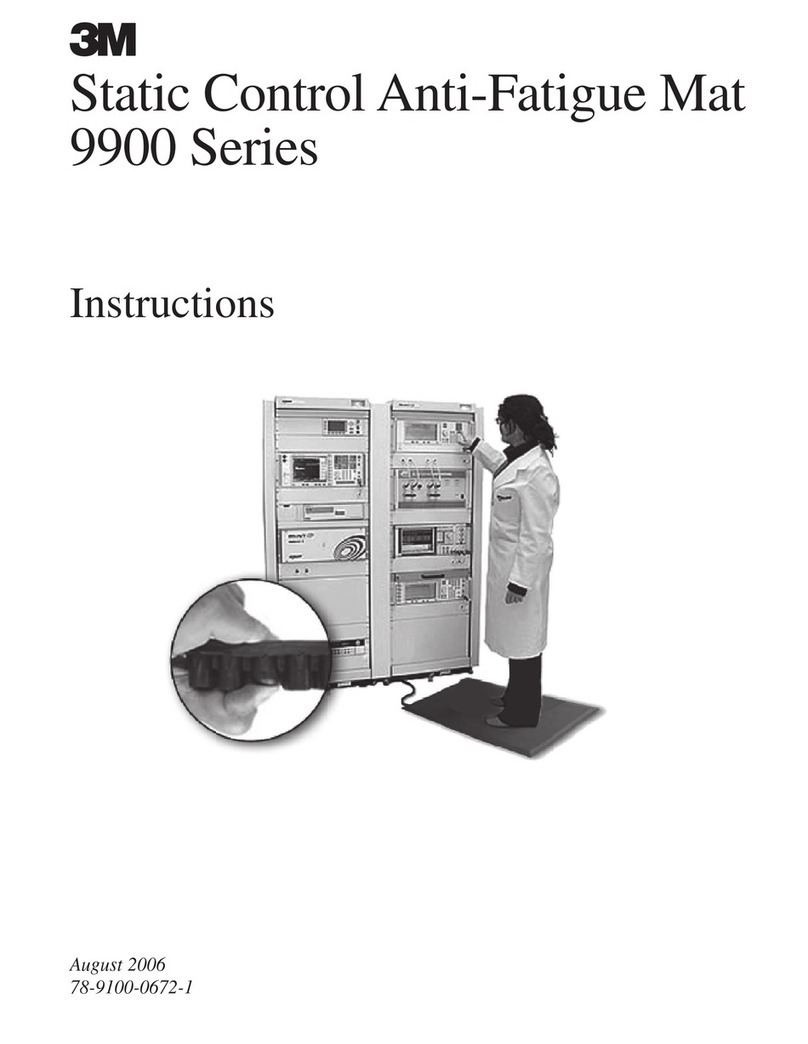
3M
3M 9900 Series instructions
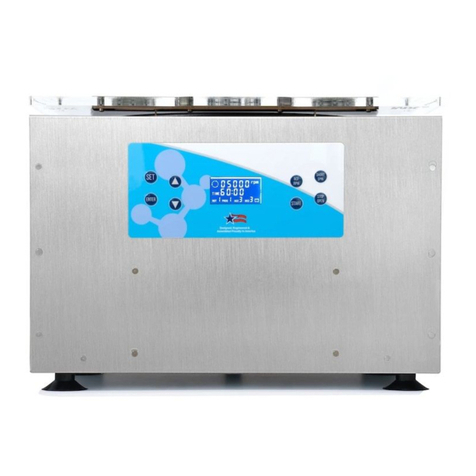
LW Scientific
LW Scientific MX5 Centrifuge instruction manual
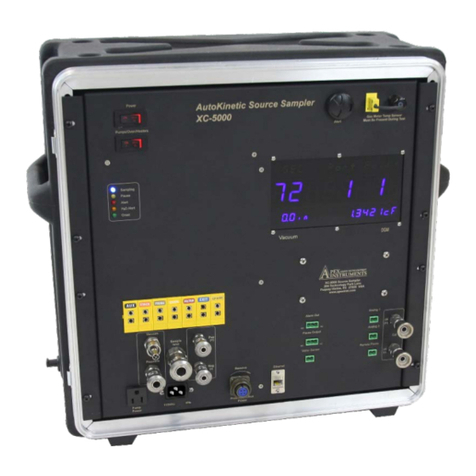
Apex Instruments
Apex Instruments XC-5000 Operator's manual

Four E's Scientific
Four E's Scientific Overstar60 quick start guide
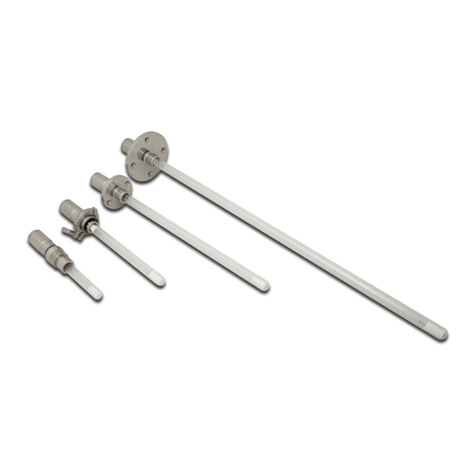
uv guard
uv guard T Series Installation and operation manual

Gilson
Gilson macroman user guide
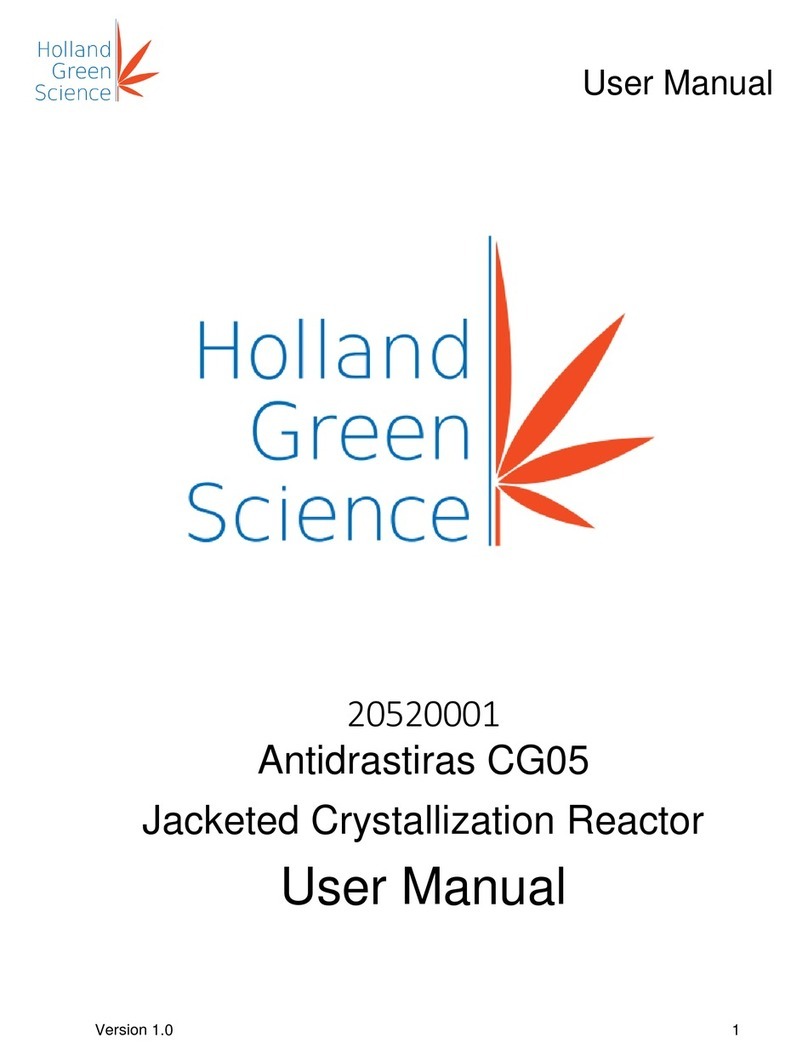
Holland Green Science
Holland Green Science Antidrastiras CG05 user manual
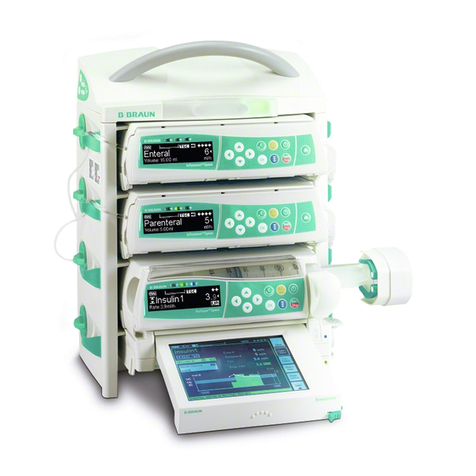
Braun
Braun SpaceControl Instructions for use

CPS
CPS CPS-UVC-19-S-1000 quick guide
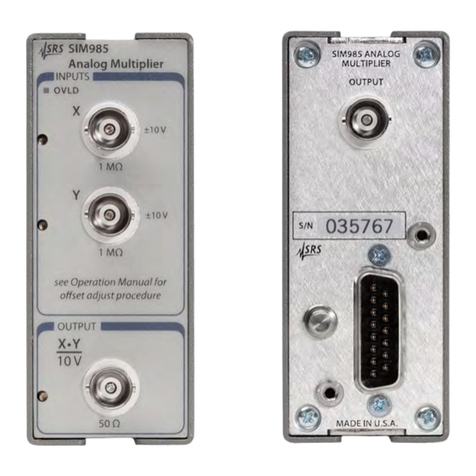
Stanford Research Systems
Stanford Research Systems SIM985 Operation and service manual
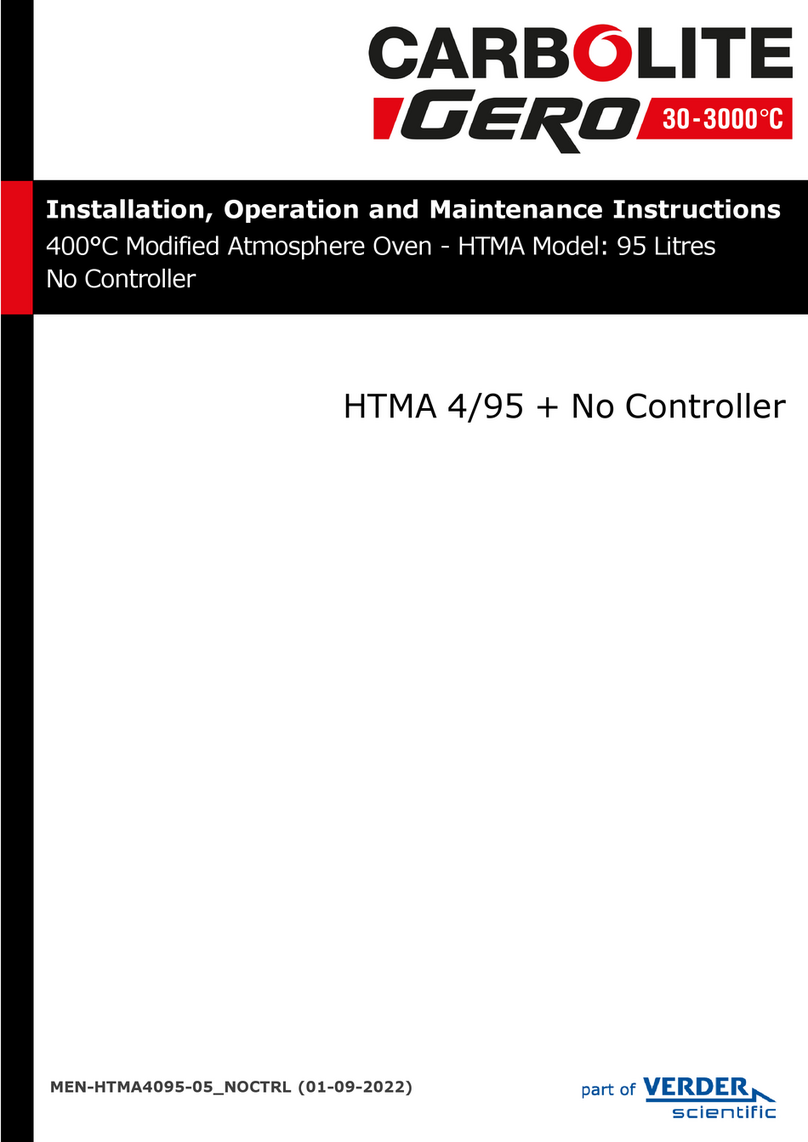
VERDER
VERDER Carbolite Gero HTMA 4/95 Installation, operation and maintenance instructions
